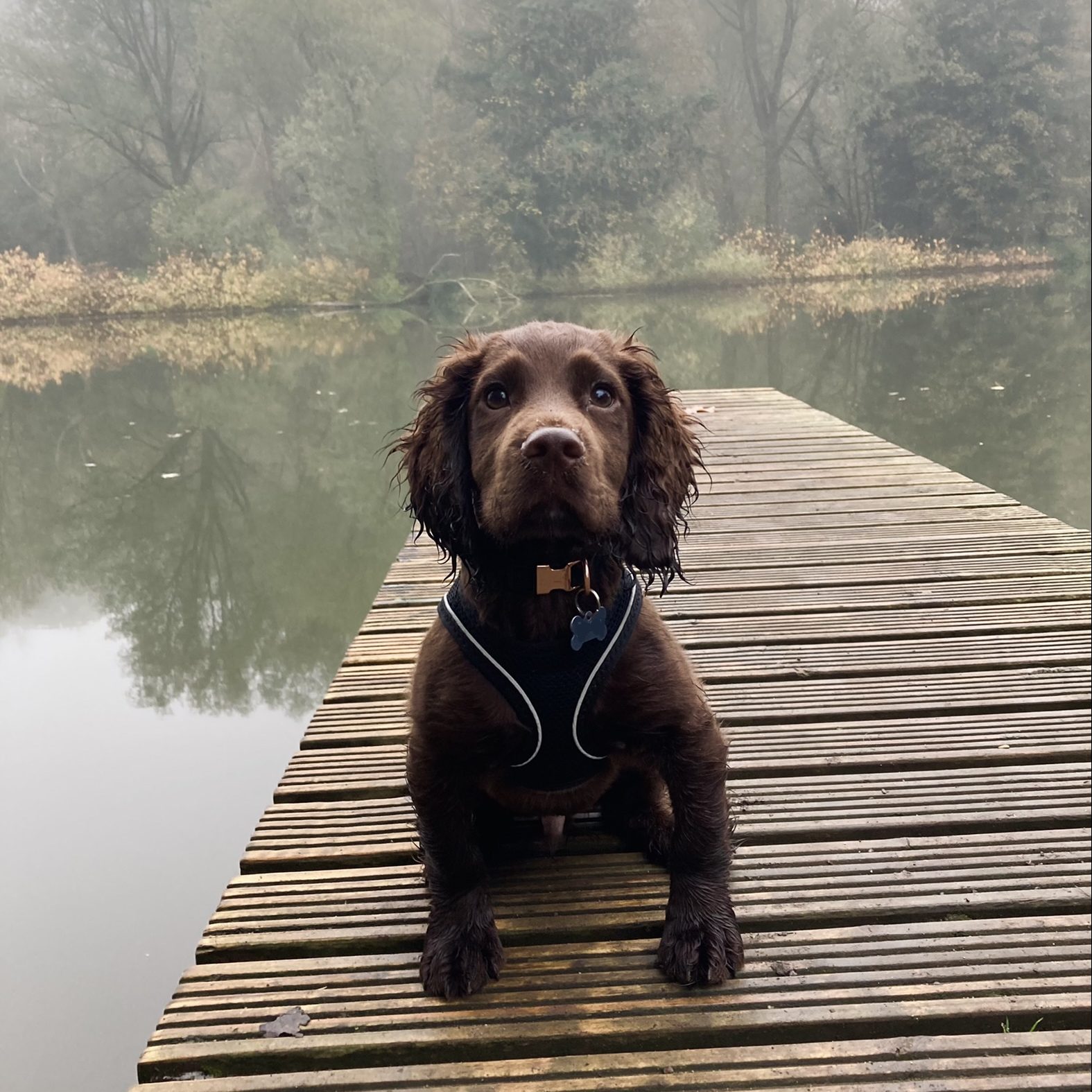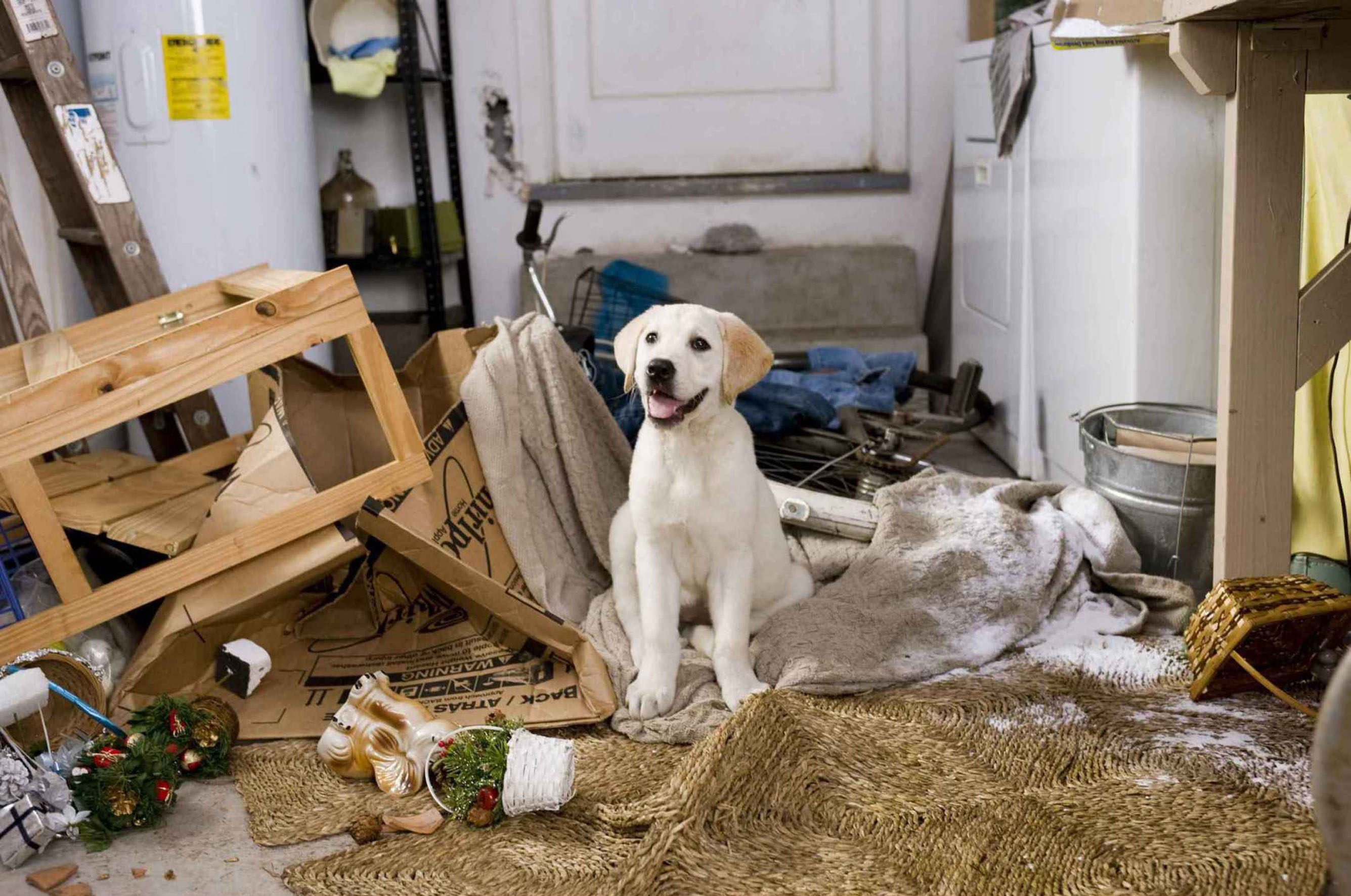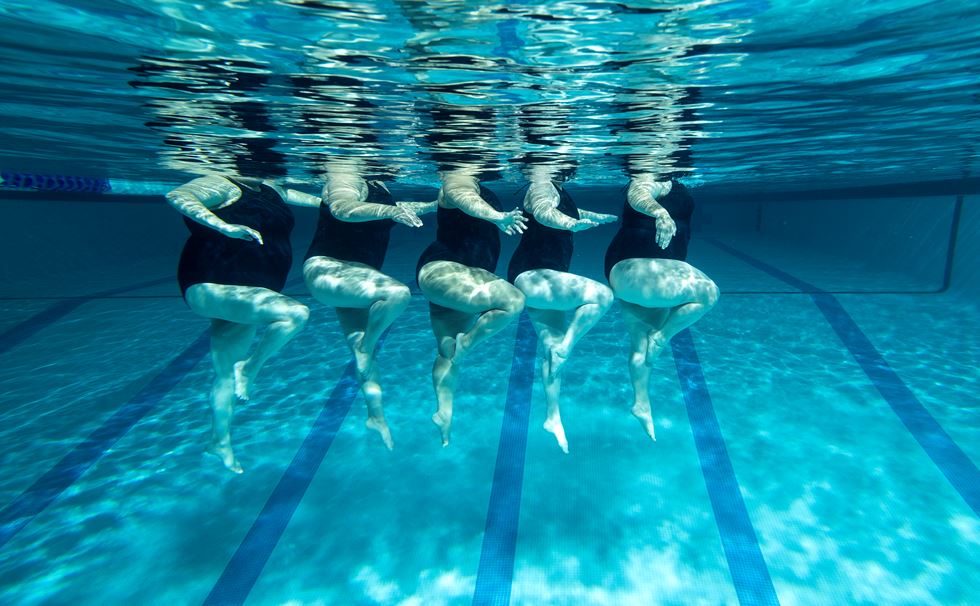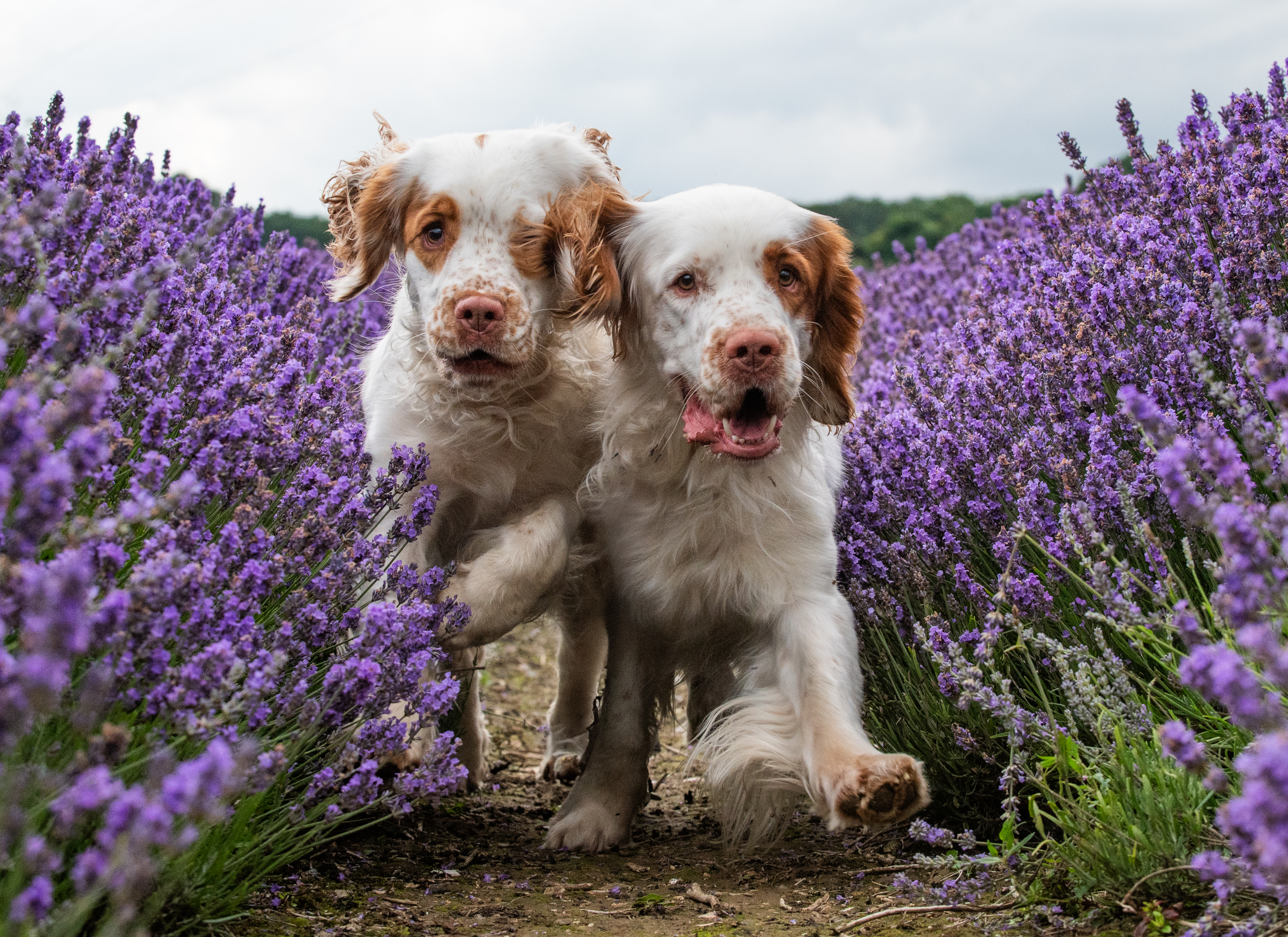Dog recall training: Six tips from champion dog trainer Ben Randall
Training your dog is not easy — and with the huge recent rise in dog ownership, it's never been a better time to share the best advice. A-list celebrity dog-trainer Ben Randall solves your canine dilemmas.


Dog recall training is a real headache for millions of owners — but why is recall such a bad problem? Why is it so common with all breeds throughout the world?
The main reason is that, from when they are puppies, most dogs have been given too much freedom on walks and they’ve become ‘self-employed’, by which I mean they quickly find their own fun, which is far more exciting than anything their owner has to offer. What’s more, when they do come back, they’re often greeted with a stern word and put back on the lead, hence why the dog is not that keen on coming back when it’s called.
I'm Ben Randall, a multiple award-winning dog trainer — you might have seen me featured last year in Country Life — and I'm very happy to say that I'm now here as the canine agony uncle. Choosing a dog is the easy bit compared to training it, but I'll be using my proven BG (Beggarbush) dog training methods to help explain how to solve all manner of problems.
You can see more of my work on Instagram @beggarbush and on my dog training app, while to pose your own question for this column email paws-for-thought@futurenet.com. And dog recall training is the first of these challenges, prompted by this message:
'Dear Ben,' writes PL from Dorset. 'I have a young Labrador, who is well-mannered and obedient around the house, but doesn’t always come back when he’s called, particularly when I take him to the park and he’s distracted by other dogs and people. What can I do to ensure he comes back to me every time?'

Six dog recall training tips
You can work on your recall training and ensure it doesn’t get into any dangerous situations, by building a better bond, trust and partnership. All dogs (and humans!) love 1-2-1 attention, and following these tips will have them coming back with enthusiasm in no time.
1. Turn dog recall training into a game
Create games that you can play with your dog at home, such as hiding balls or food around the house and asking them to find them. Start in a controlled environment — such as the kitchen or hallway — then build up to more open spaces. Making it fun for them is key. Think about it — if you were a dog and your master or mistress yelled at you: ‘Come back, Bertie, you naughty boy!’ You might not want to do as you are told, either.
2. Take it outside once you've mastered recall inside
Going outside can have associations for your dog that get in the way of recall training. If you let your young dog into the garden to go to the loo 10 times a day and they run wild every time, that’s potentially 300 times a month that you’ve allowed it to find its own recreation outside, and not listen to you.
Sign up for the Country Life Newsletter
Exquisite houses, the beauty of Nature, and how to get the most from your life, straight to your inbox.
Once the dog is used to playing recall games in the house, transfer the hide-and-seek games to the garden — after your pet has done its business, the play can start. Using the dog’s natural instinct and desire to find things will help to encourage them to focus on you and see you as exciting and someone he or she wants to come galloping back to.
3. Make it harder gradually — and step back to the basics if you have to
Remember, the key here is to build up this exercise by doing it in increasingly different and more tempting environments. If you make it incrementally more difficult, you should succeed in improving your dog’s recall. However, if you do encounter problems, go back to basics and concentrate on an easier game that your dog can easily achieve, before trying again in a place with more distractions.
4. Build dog recall training into your walks
These games can then be used while walking your dog — whereby you hide balls, dummies or food for them to seek out. Anybody can do this with any dog, no matter what breed it is — they don’t have to be a working type — as all dogs love to eat or to smell. But don't rush getting to this stage: trying to bribe your dog with a treat is less likely to work when you're out and about because smells — such as the scent of game or squirrels, other dogs, livestock and people — are far more tempting than a piece of cheese.
5. Mealtimes can be a great time to work on recall
Feed times are also a great opportunity to teach all sorts of commands, but are especially helpful when it comes to good recall, as we can encourage the dog to learn its name and respond to whistle commands. Blow the whistle (three or four individual pips) every time you prepare your dog’s food. Then ask it to follow you around the garden, while you’re carrying its food in the bowl, all the while saying your dog’s name or pipping on the whistle, a bit like the pied piper.
6. Use rewards sparingly — build the bond and the trust
You can also build a better recall by giving your dog a food reward or praise each time it comes back when it’s called. However, don’t reward it every time — it’s important that the dog recalls multiple times and knows it has to work super hard as a team with you, to build that trust in the knowledge that he or she is only rewarded for consistent good behaviour.
For more detailed advice about Ben Randall’s positive, reward-based and proven BG training methods, one-to-one training sessions, residential training or five-star dog-boarding at his BGHQ in Herefordshire, telephone 01531 670960 or visit www.ledburylodgekennels.co.uk
For a free seven-day trial of the Gundog app, which costs £24.99 a month or £249.99 a year, visit www.gundog.app/trial

The champion dog trainer with a game-changing method who can teach any dog new tricks
Award-winning dog trainer Ben Randall — who looks after the dogs for everyone from David Beckham to Gordon Ramsay — happened

The ten unwritten rules of walking your dog - and how to follow them
Being a responsible dog owner is more than just picking up after your pup and stopping them from stealing sandwiches

How to choose the perfect dog to fit your lifestyle, family and home
Those who grew up with dogs probably already know which breed they want to own, and have done for years.

Credit: Alamy
The dog who ate a stuffed crocodile, and other incredible stories from last time we tried to find Britain's naughtiest dog
Naughty dogs come in all shapes and sizes — as do their crimes and misdemeanours.

Credit: Getty Images/500px
How dogs read our minds, spot when we're lying, and fall in love with their owners
Capable of feeling jealousy and grief, as well as the love and adoration we’ve basked in for centuries, the dog

The six most destructive dog breeds
Dogs often charm their way through even their naughtiest moments, but some really push their luck. We take a look

Credit: Alamy Stock Photo
How to tell if a dog is about to bite
Bill Lambert of the Kennel Club to on how you can tell if a dog is about to bite.
-
 A mini estate in Kent that's so lovely it once featured in Simon Schama's 'History of Britain'
A mini estate in Kent that's so lovely it once featured in Simon Schama's 'History of Britain'The Paper Mill estate is a picture-postcard in the Garden of England.
By Penny Churchill
-
 Splash! A Century of Swimming and Style: A whistle-stop history, from the Roman Baths to Hampstead Heath
Splash! A Century of Swimming and Style: A whistle-stop history, from the Roman Baths to Hampstead HeathEmma Hughes dives into swimming's hidden depths at the Design Museum's exhibit in London.
By Emma Hughes
-
 Arthur Parkinson: ‘I want my chicken coop to look like the one from “Far from the Maddening Crowd”’
Arthur Parkinson: ‘I want my chicken coop to look like the one from “Far from the Maddening Crowd”’In his second instalment of all things chicken keeping, our columnist outlines the dos and don'ts of hen house maintenance.
By Arthur Parkinson
-
 RHS Chelsea Flower Show: Everything you need to know, plus our top tips and tricks
RHS Chelsea Flower Show: Everything you need to know, plus our top tips and tricksCountry Life editors and contributor share their tips and tricks for making the most of Chelsea.
By Amie Elizabeth White
-
 What the cluck? Waitrose announces ‘trailblazing’ pledge to help improve chicken welfare standards
What the cluck? Waitrose announces ‘trailblazing’ pledge to help improve chicken welfare standardsWaitrose has signed up to the Better Chicken Commitment, but does the scheme leave Britain open to inferior imports?
By Jane Wheatley
-
 Having a ruff day: Kennel Club exhibition highlights the plight of vulnerable spaniel breeds
Having a ruff day: Kennel Club exhibition highlights the plight of vulnerable spaniel breedsPhotographer Melody Fisher has been travelling the UK taking photographs of ‘vulnerable’ spaniel breeds.
By Annunciata Elwes
-
 'There is nothing like it on this side of Arcadia': Hampshire's Grange Festival is making radical changes ahead of the 2025 country-house opera season
'There is nothing like it on this side of Arcadia': Hampshire's Grange Festival is making radical changes ahead of the 2025 country-house opera seasonBy Annunciata Elwes
-
 Arthur Parkinson: I am a cleaner, security guard and matron to my happy hens
Arthur Parkinson: I am a cleaner, security guard and matron to my happy hensIn his first regular chicken-keeping column for ‘Country Life’, Arthur Parkinson introduces his brood and touches on the importance of good housekeeping.
By Arthur Parkinson
-
 Is anyone more superstitious than a sports star?
Is anyone more superstitious than a sports star?When it comes to worrying about omens and portents, nobody gets quite so worked up as our sportsmen and women.
By Harry Pearson
-
 The humble hazel dormouse — 'the flagship species of the health of our countryside'
The humble hazel dormouse — 'the flagship species of the health of our countryside'The sleepy and very sweet hazel dormouse is one of Britain's rarest mammals.
By Jack Watkins